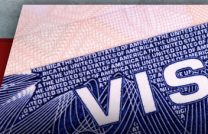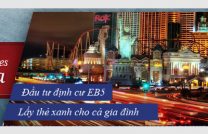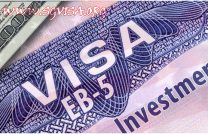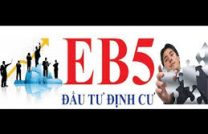VISA INVESTMENT U.S “EB-5 INVESTMENT LAW”
Dear Mr. Huy Ton and SG VISA,
After reading some of the articles you wrote about the EB-5 in the past few months, I and my family have discussed the chances of US immigration under this program, however. We still have more questions to be clarified. Mr. Huy Ton asked me some of the following.
What is the law of the EB-5 program?
What legal constraints are associated with this settlement investment law?
After the investment was paid, what case did the investor and family fail to meet the requirements required by the US government and did they not continue to receive a settlement?
Which investment projects are reliable and what factors help investors determine the success of these projects.
Hopefully Huy Ton will respond soon to help our family more information before deciding to change lives.
Dao Van Trung
trungda@@yahoo.com.vn
=================================
Hi Trung,
Since Trung’s questions need to be explained thoroughly, SG VISA would like to share with him 3 articles in the upcoming post. First of all, SG VISA shares with Trung and other interested readers about the American Settlement Investment Program (EB-5) some basic information about this program that foreign investors usually do. mind the most.
In 1990, the US Congress created the Settlement Investment Program, also known as the EB-5 program, which was implemented by US Citizenship and Citizenship (USCIS) to encourage top foreign investors. private property into the US market to stimulate the economy. Since 1992, under the pilot immigration program, some government-issued visas have been made available to EB-5 investors through the Regional Centers. Centers in the Targeted Employment Area (TEA) designated by the USCIS based on regional economic growth schemes.

US Investment Visa “EB-5 Investment Law”
When investing in EB-5 projects, investors will be living with their spouses and children under the age of 21. USCIS regulations for investors include:
1. Foreigners invest $ 500,000 in the TEA to stimulate the regional economy,
2. The amount of investment – such as cash, equipment, tangible assets, cash equivalents, and portions of assets – will generate at least 10 full-time jobs. directly or indirectly, as evidenced by the Business Plan of the annual project in the Private Placement Memorandum (PPM)
3. The amount of $ 500,000 will have to be used for project development but not for lending, meaning that the amount of the investment may be at risk or grows on the profit of the first project. private,
4. The structure of a project will be designed as follows: USCIS licenses the Regional Center – usually a nonprofit organization or unit; Regional Center nominates an EB-5 project developer through one or more projects to meet USCIS requirements; Foreign investors contribute money or assets to the project,
5. The Regional Center’s mission is to design a project that meets the requirements of USCIS and manages the project development company in accordance with these regulations.
6. 10 full-time jobs will be charged to the immediate staff of the facility, indirect employees of the contracting firm, or just job incentives for citizens, permanent residents and / or residents. in the area,
7. After investing in the project, the family of the investor, including spouses and children under 21 years of age, will receive a conditional green card and the condition that the investor has to keep the amount of $ 500,000. in the project until USCIS removes the condition of their family’s green card.
8. The EB-5 application process will follow:
a. Investors applying for the EB-5 program through a project designed by the Regional Center have been approved by USCIS, and USCIS normally takes eight months to review and approve this investment file otherwise. Additional information or other evidence should be provided.
b. After USCIS has approved the investor profile, they will transfer the file to the US Consulate General (LSQ) in Vietnam, and LSQ will have about 4 months to invite the investor’s family to interview, And if all is well, LSQ will issue a visa for the investor’s family.
c. Once a visa is issued, the investor’s family may settle in the United States.
d. Twenty-six months after the US investor’s family settled in, they can file a request for USCIS to remove the condition on the Green Card.
e. Three to six months after USCIS will remove the condition on the green card and the investor’s family becomes a normal Permanent Resident.
f. Three years later, if the families of investors lived throughout the United States, they could take citizenship and become US citizens.
SG VISA we would like to share with you Mr. Dao Van Trung and your readers about the welfare of investors and a specific project designed by Seattle Regional Center and Washington Park Partners XIV implementation in the following article.
At the same time, SG VISA hereby invites you to read some of Le Hoang readers’ questions after being denied US tourist visa in December 2012. SG VISA wishes to find useful advice and solutions. These questions are most effective for the reader to help readers Le Hoang achieve the desire to visit a child visit visa and grandchildren are studying in the United States. Invite your readers to comment or submit questions about the Child’s Newspaper or Email of SG VISA: info@sgvisa.org.









